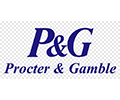
Understand The Key Trends Shaping This Market
Download Free SampleUS Network Security Appliances Market Statistics & Future Outlook (2026–2034)
- The US Network Security Appliances Market is expected to grow at a CAGR of around 9.7% during 2026 - 2034.
- In 2025, the market was valued at nearly USD 3.01 million.
- By 2034, it is projected to reach around USD 6.93 million.
- Stringent regulatory requirements in finance, healthcare, and government drive demand for advanced network security appliances.
- Managing hybrid IT environments increases complexity, vulnerabilities, and costs, challenging enterprise network security deployments.
- Adoption of zero trust models creates opportunities for appliances enabling continuous verification, segmentation, and micro-perimeter security.
- Shift toward SASE frameworks drives integration of security and networking, supporting distributed workforces and agile cloud migration.
Insightful Analysis
The US Network Security Appliances Market report insights & analysis offer in-depth understanding of market trends, growth drivers, challenges, and opportunities. This comprehensive analysis includes market size, segmentation, competitive landscape, and customer behavior to guide strategic decisions. Further, it aids in providing thorough market research, industry breakdown, market forecast, competitive examination, market trends, growth factors, SWOT analysis, and market opportunities. These insights support business planning, investment decisions, and market positioning for sustainable success.
Why Choose This Report?
- Provides a comprehensive overview of the overall market analysis, encompassing key trends, consumer behavior analysis, and risk assessment to support strategic decision-making.
- Provides accurate, up-to-date insights into market size, segmentation, and emerging opportunities, helping to minimize risk & capitalizing on growth.
- Gives deep understanding of target audience preferences, investment habits, and communication channels for enhanced product development & marketing effectiveness.
- Delivers competitive analysis & benchmarking, uncovering the strengths & weaknesses of market competitors to guide strategies.
- Consolidate comprehensive market intelligence, reducing reasoning & streamlining research efforts.
- Facilitates customized market segmentation & risk mitigation strategies, fine-tuned to the business objectives.
- Aids in identifying both market challenges & untapped opportunities within the industry to drive long-term business growth.
- Provides valuable information based on actual customer data & search trends.
US Network Security Appliances Market Dynamics (2026–2034)
Market Driver:
Growth Through Regulatory Stringency - A key driver is the increasingly stringent regulatory environment targeting data privacy and cyber-defense standards in financial services, healthcare, and government sectors. Organizations are compelled to upgrade or expand security appliance deployments, directly fueling demand.
Major Challenge:
Escalating Complexity of Hybrid Environments - A significant challenge is managing security needs in hybrid IT architectures combining on-premises infrastructure with multi-vendor cloud ecosystems. This complexity increases vulnerabilities and drives demand for advanced, often higher-cost, security solutions.
Opportunity Ahead:
Shift to Zero Trust Models - A promising opportunity in 2026–34 arises from adoption of zero trust security models, positioning network security appliances as foundational layers for continuous verification, segmentation, and micro-perimeterization. Vendors offering seamless integration and effective monitoring can capitalize on this shift.
Industry Trend:
Trend Toward Secure Access Service Edge (SASE) - A standout trend is the transition to SASE frameworks, where software-defined WAN converges with security functions. SASE encourages vendors to bundle firewalls, gateways, and intrusion prevention, supporting distributed workforces and agile cloud migration.
How is the US Network Security Appliances Market Defined as per Segments?
The US Network Security Appliances Market segmentation categorizes the market into distinct segments based on behavioral, psychographic, geographic, and demographic factors. Firmographic & technographic segmentation for B2B or B2C markets is also included. Further, by concentrating on client, lifestyle, location, behavior, and company attributes, these segments assist businesses in targeting particular customer or user needs, enhancing product/services positioning, and improving marketing methods. Effective market reach and resource allocation are achieved through this segmentation.
What is the Impact of Artificial Intelligence (AI) on the US Network Security Appliances Market?
Artificial Intelligence (AI) significantly transforms the US Network Security Appliances Market by enhancing efficiency, enabling faster data analysis, and driving innovation. AI tools automate repetitive processes, provide deeper insights using predictive analytics, and improve customer experiences through personalization. The technology unlocks new opportunities but requires strategic adaptation to fully realize its benefits and manage risks. Organizations integrating AI responsibly & strategically are expected to strengthen market outlook.
Company Profile: Largest US Network Security Appliances Market Companies (2034)
By 2034, the US Network Security Appliances Market would be led by Cisco Systems, Palo Alto Networks, Fortinet, Check Point Software, Juniper Networks, SonicWall, IBM, F5 Networks, Trend Micro, Barracuda Networks, Zscaler, Arista Networks, Extreme Networks, Hewlett Packard Enterprise, Qualys, etc., who are forecasted to generate the highest market revenues & share owing to numerous activities like partnerships, collaborations & mergers, and innovation & launch of new products/services.
Major Queries Answered in the Report
- What is the current state of the US Network Security Appliances Market?
- What key developments are influencing the US Network Security Appliances industry?
- Which factors are shaping growth in the US Network Security Appliances Market?
- What are the challenges faced by businesses in this sector?
- How are emerging technologies transforming the US Network Security Appliances industry?
- Who are the primary competitive players in the US Network Security Appliances domain?
- What new opportunities exist for stakeholders and investors?
- How are consumer and enterprise behaviors evolving within the market?
- Which regional and global factors impact US Network Security Appliances adoption?
- Where can stakeholders access detailed, sector-specific insights on the US Network Security Appliances Market?
- What innovations are defining the industry’s next phase of growth?
Table of Contents
- Introduction
- Objective of the Study
- Product Definition
- Market Segmentation
- Study Variables
- Research Methodology
- Secondary Data Points
- Breakdown of Secondary Sources
- Primary Data Points
- Breakdown of Primary Interviews
- Secondary Data Points
- Executive Summary
- US Network Security Appliances Market Dynamics
- Drivers
- Rising Sophistication of Cyber Threats
- Cloud & Hybrid IT Infrastructure Growth
- Regulatory Pressure (HIPAA, PCI DSS, etc.)
- Digital Transformation and Remote Work Shift
- Challenges
- High Integration Costs for SMEs
- Talent Shortages and Evolving Attack Vectors
- Opportunity Assessment
- AI & ML-Powered Security Appliance Adoption
- Growth of Zero-Trust Architecture
- Managed Security Services
- Drivers
- Recent Trends and Developments
- Virtual and Cloud-native Appliances
- Integrated Unified Threat Management (UTM) platforms
- SD-WAN and Secure Access Service Edge (SASE) integration
- Strategic Alliances, M&A, and Tech Innovation
- Policy and Regulatory Landscape
- US Cybersecurity Frameworks and Standards
- Data Privacy (CCPA, GDPR echoes)
- Industry Compliance (Banking, Healthcare, Government)
- US Network Security Appliances Market Overview (2026–2034)
- Market Size & Growth, By Value (USD Million)
- Market Share, By Equipment Type
- Firewalls
- Intrusion Detection/Prevention Systems (IDS/IPS)
- VPN Appliances
- Secure Web Gateways
- Network Access Control
- Unified Threat Management (UTM)
- Advanced Malware Sandbox
- Market Share, By Application
- Data Center Security
- Enterprise Network Security
- Cloud Security
- ICS/IoT/OT Security
- Endpoint Security
- Market Share, By Deployment Mode
- On-Premises
- Cloud-Based
- Hybrid
- Market Share, By End User
- Enterprises (Large, SMB)
- Government
- Healthcare
- BFSI
- Manufacturing
- Retail
- Telecom
- Transportation
- Others
- Company Market Share Analysis
- Revenue Shares & Rankings
- Competitive Landscape Features
- Segment-wise & Industry-wise Market Overview & Forecast (2026–2034)
- By Equipment Type
- By Application
- By Deployment Mode
- By End User
- Competitive Outlook & Profiles
- Cisco Systems
- Company Overview
- Business Segments
- Strategic Alliances/Partnerships
- Recent Developments
- Palo Alto Networks
- Company Overview
- Business Segments
- Strategic Alliances/Partnerships
- Recent Developments
- Fortinet
- Company Overview
- Business Segments
- Strategic Alliances/Partnerships
- Recent Developments
- Check Point Software
- Company Overview
- Business Segments
- Strategic Alliances/Partnerships
- Recent Developments
- Juniper Networks
- Company Overview
- Business Segments
- Strategic Alliances/Partnerships
- Recent Developments
- SonicWall
- Company Overview
- Business Segments
- Strategic Alliances/Partnerships
- Recent Developments
- IBM
- Company Overview
- Business Segments
- Strategic Alliances/Partnerships
- Recent Developments
- F5 Networks
- Company Overview
- Business Segments
- Strategic Alliances/Partnerships
- Recent Developments
- Trend Micro
- Company Overview
- Business Segments
- Strategic Alliances/Partnerships
- Recent Developments
- Barracuda Networks
- Company Overview
- Business Segments
- Strategic Alliances/Partnerships
- Recent Developments
- Zscaler
- Company Overview
- Business Segments
- Strategic Alliances/Partnerships
- Recent Developments
- Arista Networks
- Company Overview
- Business Segments
- Strategic Alliances/Partnerships
- Recent Developments
- Extreme Networks
- Company Overview
- Business Segments
- Strategic Alliances/Partnerships
- Recent Developments
- Hewlett Packard Enterprise
- Company Overview
- Business Segments
- Strategic Alliances/Partnerships
- Recent Developments
- Qualys
- Company Overview
- Business Segments
- Strategic Alliances/Partnerships
- Recent Developments
- Cisco Systems
- Contact Information / Disclaimer
Top Key Players & Market Share Outlook
- Cisco Systems
- Palo Alto Networks
- Fortinet
- Check Point Software
- Juniper Networks
- SonicWall
- IBM
- F5 Networks
- Trend Micro
- Barracuda Networks
- Zscaler
- Arista Networks
- Extreme Networks
- Hewlett Packard Enterprise
- Qualys
- Others
Frequently Asked Questions








